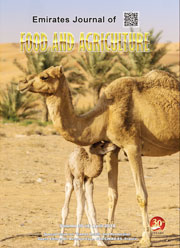MOLECULAR AND MORPHOLOGICAL IDENTIFICATION OF SOME ELITE VARIETIES OF DATEPALMS GROWN IN SAUDI ARABIA
Keywords:
Morphology, Fruit shape, Length-width ratio, Genetic diversity, RAPDAbstract
Date palm (Phoenix dactylifera L.), is a highly out breeding, dioecious plant species of enormous genetic diversity. Genotype identification of date palm is an intricate empirical exercise based on morphological characters. In date palms most of the female cultivars are recognised by their fruit characteristics such as size, shape, colour and taste. Morphological characters of the tree are also taken into consideration for cultivar identification. However some date palms have similar or narrow distinguishing morphological characters that complicate cultivar identification and require genetic evidence to prove phylogenetic relationships. RAPD analysis has been successfully applied for cultivar identification of date palms. The objectives of the present study were to characterize some elite cultivars of date palms using morphological characters of fruits and to correlate the results with RAPD markers. A total of 14 well-known cultivars of date palm (Barhy, Deglet Noor, Hilaliah, Hilwa, Khalas, Makhtomi, Moneifi, Nabtet Ali, Omal Khashab, Rothana, Sabbaka, Shagra, Sukkary, Wannanah) were selected from Saudi Arabia. Analysis of the morphological data of fruits revealed a high level of diversity in length-width ratio, colour, shape of the fruit, fruit-base and in the percentage of area covered by the fruit cap. The length-width ratio of these 14 cultivars ranged from 1.1 to 2.62, indicating a great variation in their shape. Correlation of morphologic characters with genomic similarity using RAPD markers showed that the fruit shape is one of the characteristics most influenced by genetic variation. Wherever there was insignificant length-width ratio among cultivars, more genomic similarity was observed. Genetic variations at the molecular level have resulted in the production of many elite date palm cultivars which are highly variable in fruit size, shape, colour, texture, sugar and protein content. The methodology followed in this study can be extended to other cultivars, which may ultimately result in the compilation of an authentic manual describing the diagnostic characters of date palm cultivars with their existing synonyms. The RAPD analysis will help to resolve the ambiguity regarding the identity of narrowly-distinguishable cultivars and to assess genetic diversity for the conservation of date palm germplasm in Saudi Arabia.






 .
. 